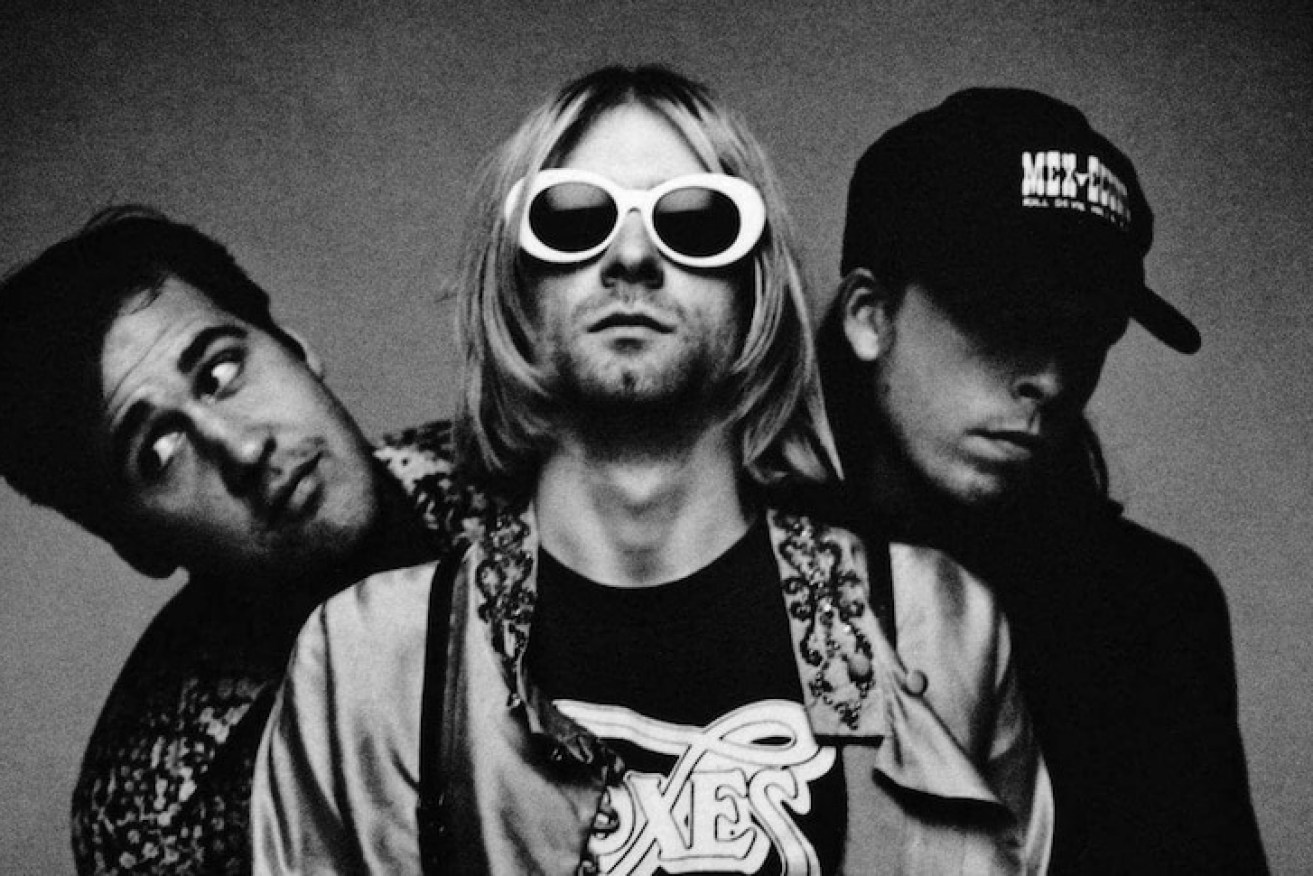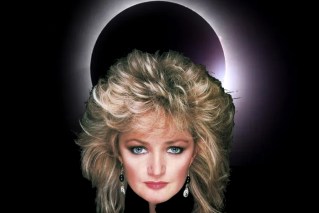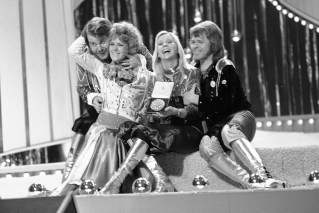1991 saw the music industry turned upside down, and 30 years later, its echoes remain

Nirvana's Novaselic, Cobain and Grohl were key in the "quasi-revolution" that up-ended music.
In the 1980s the music industry was divided into two worlds.
On one side was the big-money mainstream world of MTV-approved pop and rock stars, the all-important singles and album charts, and pay-to-play commercial radio.
This is where you would find the likes of Michael Jackson, Whitney Houston and Michael Bolton.
On the other side was so-called “alternative music” – a catch-all category that covered everything from punk and metal to gangsta rap and indie rock.
This was an underground world of indie labels, college and public radio stations, low-budget recording studios, and van loads of rough-and-ready bands traversing the dive bars and low-key venues of Australia and the US.
As Craig Schuftan wrote in his book Entertain Us! The Rise and Fall of Alternative Rock in the ’90s:
The two worlds ‘‘were so sharply divided that the idea of crossing over wouldn’t have crossed most indie musicians’ minds’’.
In 1991 all that changed.
Here we are now, entertain us
Underground music in the late ’80s was becoming popular without the assistance of major labels, MTV, or mainstream radio, but rather through relentless gigging, word-of-mouth, street press, and non-commercial radio.
Occasionally an alternative rock band would burst into the mainstream like a green shoot finding a crack in the concrete.
Georgia band REM released five critically acclaimed independent albums between 1983 and 1987, while on the other side of the country Los Angeles rockers Jane’s Addiction were making an impact with their electrifying live shows.
Major labels had to take notice, so Warners signed both bands in 1988, making them the first so-called alt-rock bands to be ushered into the big leagues.
Elsewhere in the US, bands such as The Replacements, Fugazi, and Husker Du were building huge fanbases on college campuses, while fellow American bands Pixies and Mudhoney were finding acclaim in the more egalitarian UK music scene.
For Aussie bands, which had long taken their cultural cues from America, the gulf between the underground and the mainstream was even wider.
Acts such as TISM, The Hard-Ons, Falling Joys and Died Pretty were gaining cult followings, while Nick Cave and the Bad Seeds and The Go-Betweens were winning fans in the UK and Europe, despite being largely unknown in mainstream Australia.
It’s it. What is it?
By the time the ’90s rolled around the cracks were widening in the wall that kept underground music out of the mainstream.
The January 1990 release of Faith No More’s hit single Epic in particular, with its inventive mix of hard rock, funk and rap, was seismic.
“No one in 1990 had ever heard anything quite like it,” Schuftan wrote in Entertain Us!
“Epic was one of new music’s first real success stories, a proper fusion of hip-hop and hard rock which seemed to combine all the best elements of both genres and more besides.”
The song went to No.1 in Australia and was in the top 10 in the US, proving it was possible for alternative bands to sneak a hit single into the mainstream.
Jen Brennen, who was working at triple j at the time, said she and her colleagues noticed things were changing and the major labels running the show “were out of touch”.

Metallica performs at Glastonbury, in 2014. Photo: Getty
“I remember having a discussion with Polygram about Metallica’s [album …And Justice For All in 1988] and they were reluctant to release it [in Australia],” Brennen said.
“I remember arguing (with them) and they were like, ‘It won’t ever have an audience. There’s no point [releasing it]’.
“They thought they’d sell 1500 copies or something.
“I just thought, ‘This is ridiculous’. They weren’t able to see what was happening.”
Metallica’s …And Justice For All went double platinum in Australia, selling more than 140,000 copies.
In the US, it sold eight million and reached No.6 on the Billboard charts.
American news and culture magazine Mother Jones called …And Justice For All “the first underground metal album to break the top 10”, a feat achieved despite “its grinding, whipsaw guitars [being] too harsh for mainstream radio”.
We’re off to Never Never Land
All this led to 1991, the year the dam burst.
As US chart guardians Billboard wrote in 2014, the ’90s was the decade when “15 years of post-punk underground rock music finally bubbled over into the mainstream in a way that few could have predicted, and which turned the record industry almost entirely upside down for the remainder of the 20th century”.
“1991 was the year where that quasi-revolution happened in earnest.”
In Australia, the first shots in this “quasi-revolution” were fired by Sydney indie rock band Ratcat.
Over the course of two high-flying months in 1991 – May and June – their EP Tingles, single Don’t Go Now, and album Blind Love all topped the ARIA charts.
The local success of a band like Ratcat, on an independent label, I think really underscored that the business was changing,’’ Brennen said.
“There was a change that was forced upon the major record companies and they started acquiring independent labels and doing distribution deals.
“It was a major change.”
At the same time across the Pacific, REM reached No.1 with its major label debut Out Of Time, followed soon after by gangsta rap group N.W.A.
Two months later, Metallica’s self-titled follow-up – dubbed Black Album – achieved the impossible in reaching No.1 in the US and Australia, and becoming one of the biggest-selling albums of all time.
Triple j’s Richard Kingsmill, who was a presenter and producer in 1991, described alternative music’s breakthrough year as “like a train which [had been] gathering speed and then all of a sudden just crashed through a wall”.
“The reason why I can remember it so clearly is because the CD shelves in [triple j’s] library were all catalogued chronologically,” Kingsmill said.
When you were picking out the records to play you went to a certain section of the library shelf, and it just kept imprinting on my brain what an amazing couple of months they were.
“You had Metallica’s Black record in August, but you also had the Pixies record [Trompe le Monde] in September, Ten from Pearl Jam [in August], you had the Red Hot Chili Peppers’ Blood Sugar Sex Magik … you had Sonic Youth as well … and Badmotorfinger by Soundgarden [and] you also had English stuff like Primal Scream’s Screamadelica.
“We were getting all of these records within the space of days, a couple of weeks.
“It was like being a kid in a candy store. Everywhere you turned there were fantastic records, and you realised something has changed.”
And, of course, there was Nirvana.
Come as you are
Soundgarden was the first grunge band to sign to a major label and fellow Seattle act Pearl Jam released its debut record Ten first, but it was Nirvana’s landmark album Nevermind that changed everything.
If the likes of Metallica, Faith No More and Pixies had prised open the door, Nirvana kicked it off its hinges.

The late Kurt Cobain of Nirvana performs in Seattle in December 1993.
The Seattle trio had recently signed with Geffen Records, largely at the urging of fellow Geffen signees and alt-rock veterans Sonic Youth, who had taken Nirvana on tour with them in Europe and the UK prior to Nevermind‘s release, as seen in the documentary 1991: The Year Punk Broke.
“1991 was a big year, but there were a lot of signs that something was brewing and that something was going to happen,” Kingsmill said.
“It needed one focal point, one band, to be that Sex Pistols for this generation. And of course it was Nirvana.”
Brennen remembered triple j playing Nirvana’s Smells Like Teen Spirit “a few weeks” earlier than other stations because a staff member had been given a copy by Nirvana’s manager while in the US.
People went hysterical once they heard it. They couldn’t get enough of it,’’ she said.
“It was huge. From the moment we played it people responded and rang up.”
A four-chord surge of Pixies-esque loud-quiet-loud dynamics, topped off with a surprisingly complex but catchy melody, Smells Like Teen Spirit became a lightning rod for this tsunami of new music.
The song, along with its rabble-rousing film clip, spoke to the young generation – the so-called Generation X – like nothing before.
Triple j listeners would vote it the greatest song of all time just months after its release and would repeat the feat in 1998 and 2009, while Rolling Stone magazine named it in the top 10 of its 500 Greatest Songs Of All Time lists in 2004 and 2010.
On the same day on September 24, 1991, two weeks after Smells Like Teen Spirit was officially released as a single, Nirvana and Soundgarden released their albums Nevermind and Badmotorfinger, and Los Angeles funk-rockers Red Hot Chili Peppers’ released Blood Sugar Sex Magik.
The new sound – really a bunch of different sounds all bundled up under the convenient label of “alternative music” – bubbled away throughout the remainder of the year, eventually reaching boiling point in the first weeks of 1992.
Nirvana’s Nevermind did the unthinkable and unseated Michael Jackson’s Dangerous from the No.1 spot on the Billboard album chart.
At the same time, Nevermind began its 13-week run in the Australian top 10.
As Schuftan put it in Entertain Us!, “the symbolism in this case was particularly hard to resist”.
“A record by a band no one had ever heard of, which had hardly been promoted at all, had knocked Michael Jackson off the top of the chart,” he wrote.
“A revolt from below had taken place and pop’s reigning monarch had been deposed by a band of grunge punks from Seattle.”
Gonna break my rusty cage, and run
The floodgates were opened.
Tim Rogers, songwriter and frontman for iconic Australian band You Am I, remembered the time fondly.
“My friend’s partner at the time … was the editor of a magazine called Hot Metal and [she] came around to my place … and she had a cassette copy of Nevermind and on the B-side was Badmotorfinger by Soundgarden,” he recalled.
“She gave me that tape so I think I had one of the very first copies of both those records in my possession, and we used to hold parties that were based around that tape.
That cassette was the most coveted thing I had in my possession. I wish I still had it.’’
In 1992, Red Hot Chili Peppers’ Blood Sugar Sex Magik would also reach No.1 in Australia, while Pearl Jam’s Ten would enjoy its first of 72 weeks in and out of the ARIA charts over the next three years.

You Am I frontman Tim Rogers at the 1992 Big Day Out in Sydney.
Pearl Jam would finally get their No.1 record in Australia and the US in 1993 with their second album Vs.
And in 1994, metal band Pantera and grunge acts Soundgarden, Pearl Jam, Nirvana, and Stone Temple Pilots would all reach No.1 on the ARIA charts.
For the remainder of the ’90s, the gulf between the underground and the mainstream was virtually non-existent.
The alternative boom of American bands meant Australian major labels and commercial radio were more willing to take a punt on Aussie bands, putting a guitar band like You Am I, which formed in 1989, in a prime position.
“We achieved probably hundreds of percentages more than we would have probably five years previous,” Rogers said.
“We never sold a lot of records even though we were No.1 for a week three times, and it was only a week.
“Our most successful record, Hourly Daily, sold 60,000 records, and that was about 400,000 less than any other act that got a best album ARIA for example.
“I’m definitely not complaining about that because that’s 60,000 more than would have sold five years previous.”
The alt-rock boom in Australia kicked off in earnest in 1994, building and bubbling to its own boiling point as it had in 1991 in the US.
As Kingsmill put it, Australia needed its own lightning rod, its own Smells Like Teen Spirit moment, to “really stamp how great all this Aussie music really was”.
“And that was Tomorrow by Silverchair and the Frogstomp record in 1994,” Kingsmill said.
“You had You Am I and Spiderbait and Regurgitator and Tumbleweed [and] they’d been around and were an influence on Silverchair, [but] you just needed that story to attach to a band.
“And you couldn’t have had a better story than three high school kids in Newcastle.”
But that is a story for another day.
–ABC







